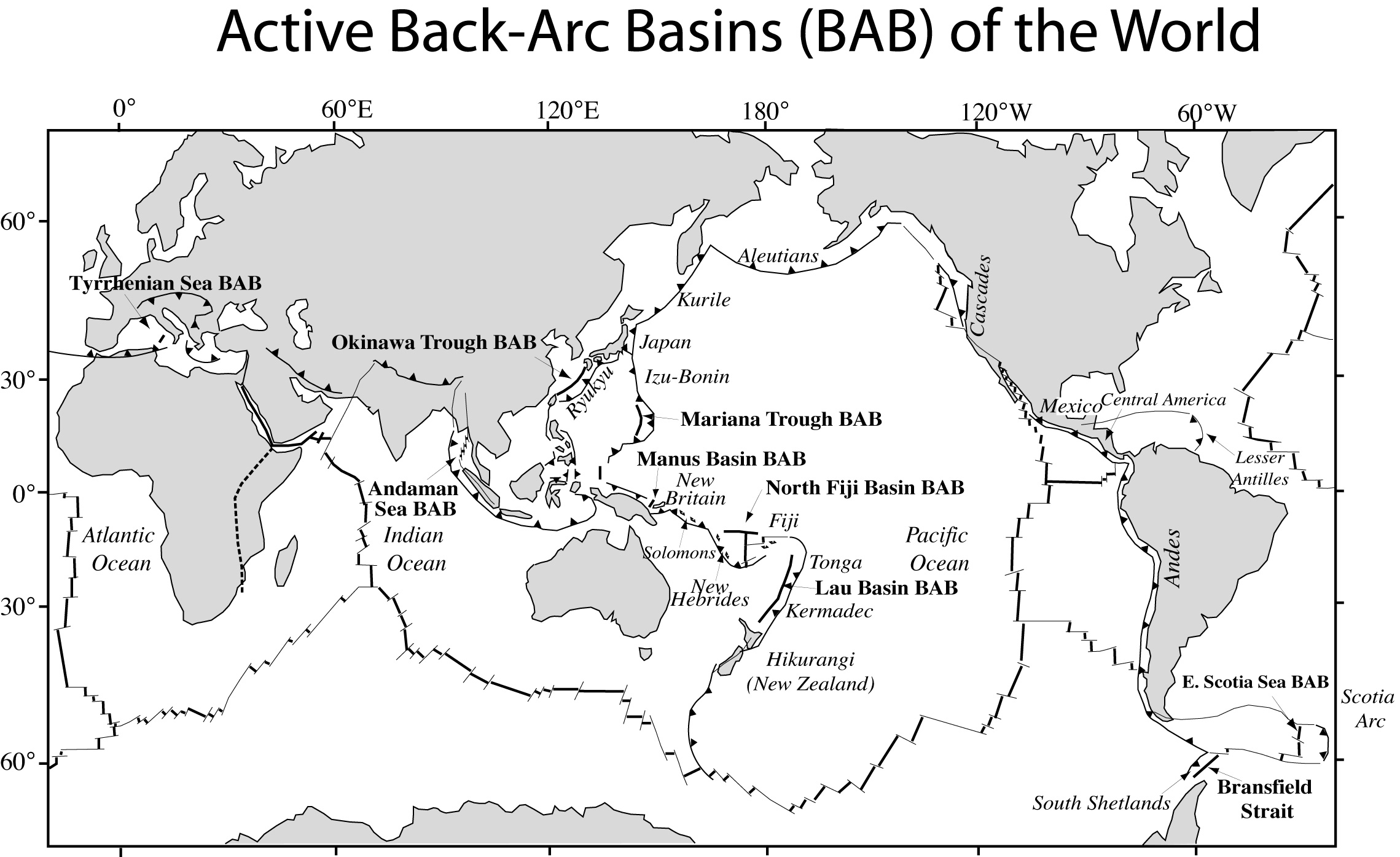Okinawa Trough on:
[Wikipedia]
[Google]
[Amazon]
 The (also called , literally China-Ryukyu Border Trough ) is a seabed feature of the
The (also called , literally China-Ryukyu Border Trough ) is a seabed feature of the
"Maritime Jurisdiction in the Three China Seas," p. 10.
UC Berkeley: UC Institute on Global Conflict and Cooperation; retrieved 15 Nov 2010. According to Professor Ji Guoxing of the Asia-Pacific Department at Shanghai Institute for International Studies, * China's interpretation of the geography is that * Japan's interpretation of the geography is that
OCLC 32464941
* Thakur, Naresh Kumar and Sanjeev Rajput. (2010). ''Exploration of Gas Hydrates: Geophysical Techniques.'' Berlin: Springer Verlag.
OCLC 646113755
{{East Asia plates Geology of China Geology of Japan Geology of South Korea Plate tectonics Back-arc basins
 The (also called , literally China-Ryukyu Border Trough ) is a seabed feature of the
The (also called , literally China-Ryukyu Border Trough ) is a seabed feature of the East China Sea
The East China Sea is an arm of the Western Pacific Ocean, located directly offshore from East China. It covers an area of roughly . The sea’s northern extension between mainland China and the Korean Peninsula is the Yellow Sea, separated ...
. It is an active, initial back-arc rifting basin which has formed behind the Ryukyu arc-trench system in the West Pacific. It developed where the Philippine Sea Plate is subducting under the Eurasia Plate.
Description
It is aback-arc basin
A back-arc basin is a type of geologic basin, found at some convergent plate boundaries. Presently all back-arc basins are submarine features associated with island arcs and subduction zones, with many found in the western Pacific Ocean. Most o ...
formed by extension within the continental lithosphere behind the far deeper Ryukyu Trench-arc system. The thickness of the crust in the northern Okinawa Trough is 30 km, thinning to 10 km in the southern Okinawa Trough. It has a large section more than deep and a maximum depth of .
The Okinawa Trough still in an early stage of evolving from arc type to back-arc activity, and features volcanoes such as the Yonaguni Knoll IV.
Implications for the China–Japan maritime boundary
Interpretations
The existence of the Okinawa Trough complicates descriptive issues in the East China Sea.Ji, Guoxing. (1995)"Maritime Jurisdiction in the Three China Seas," p. 10.
UC Berkeley: UC Institute on Global Conflict and Cooperation; retrieved 15 Nov 2010. According to Professor Ji Guoxing of the Asia-Pacific Department at Shanghai Institute for International Studies, * China's interpretation of the geography is that * Japan's interpretation of the geography is that
Legal Procedure
On August 15, 2013, China's mission did a presentation to the Commission on the Limits of the Continental Shelf (CLCS) established under theUnited Nations Convention on the Law of the Sea
The United Nations Convention on the Law of the Sea (UNCLOS), also called the Law of the Sea Convention or the Law of the Sea Treaty, is an international agreement that establishes a legal framework for all marine and maritime activities. , 167 ...
(UNCLOS). The presentation was on the proposal that demarcates the limits of the outer continental shelf beyond 200 nm in part of the East China Sea
The East China Sea is an arm of the Western Pacific Ocean, located directly offshore from East China. It covers an area of roughly . The sea’s northern extension between mainland China and the Korean Peninsula is the Yellow Sea, separated ...
. China states that China's continental shelf in the East China Sea
The East China Sea is an arm of the Western Pacific Ocean, located directly offshore from East China. It covers an area of roughly . The sea’s northern extension between mainland China and the Korean Peninsula is the Yellow Sea, separated ...
extends to China-Ryukyu Border Trough naturally, which has been over 200 nautical mile
A nautical mile is a unit of length used in air, marine, and space navigation, and for the definition of territorial waters. Historically, it was defined as the meridian arc length corresponding to one minute ( of a degree) of latitude. Tod ...
s away from the mainland baseline of Chinese territorial waters. According to UNCLOS, any country claiming continental shelves beyond 200 nm shall provide relevant scientific evidence to CLCS. To collect solid data, China deployed 14 scientific survey ships, covering an area of 250,000 square kilometers.
Notes
References
* Taylor, Brian. (1995). ''Backarc Basins: Tectonics and Magmatism.'' New York: Plenum Press.OCLC 32464941
* Thakur, Naresh Kumar and Sanjeev Rajput. (2010). ''Exploration of Gas Hydrates: Geophysical Techniques.'' Berlin: Springer Verlag.
OCLC 646113755
{{East Asia plates Geology of China Geology of Japan Geology of South Korea Plate tectonics Back-arc basins